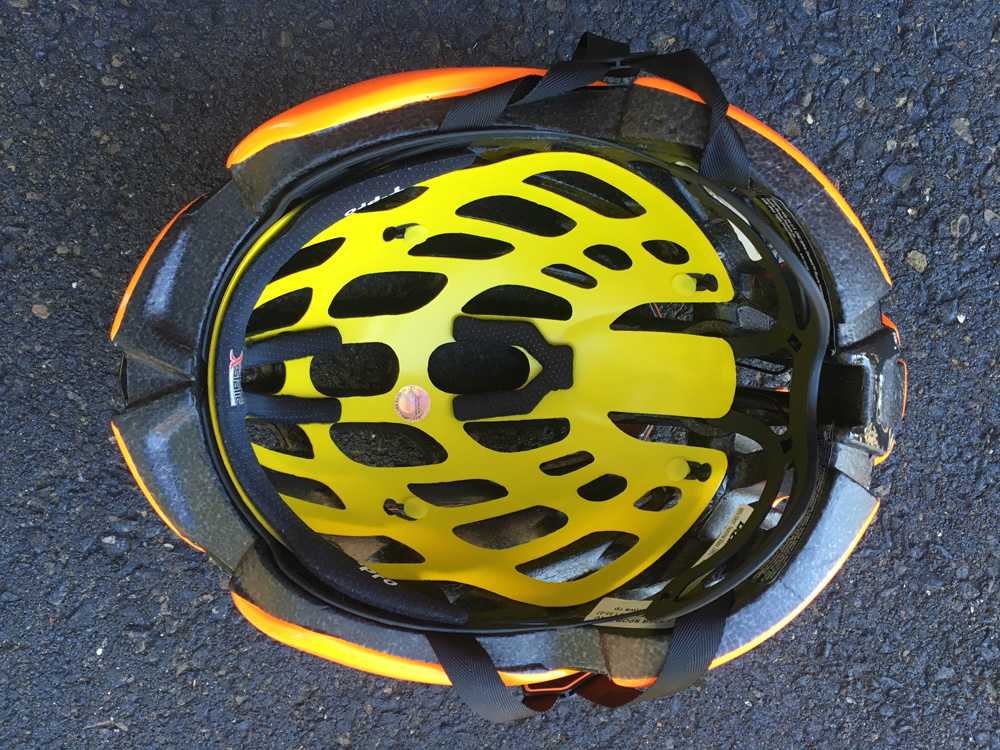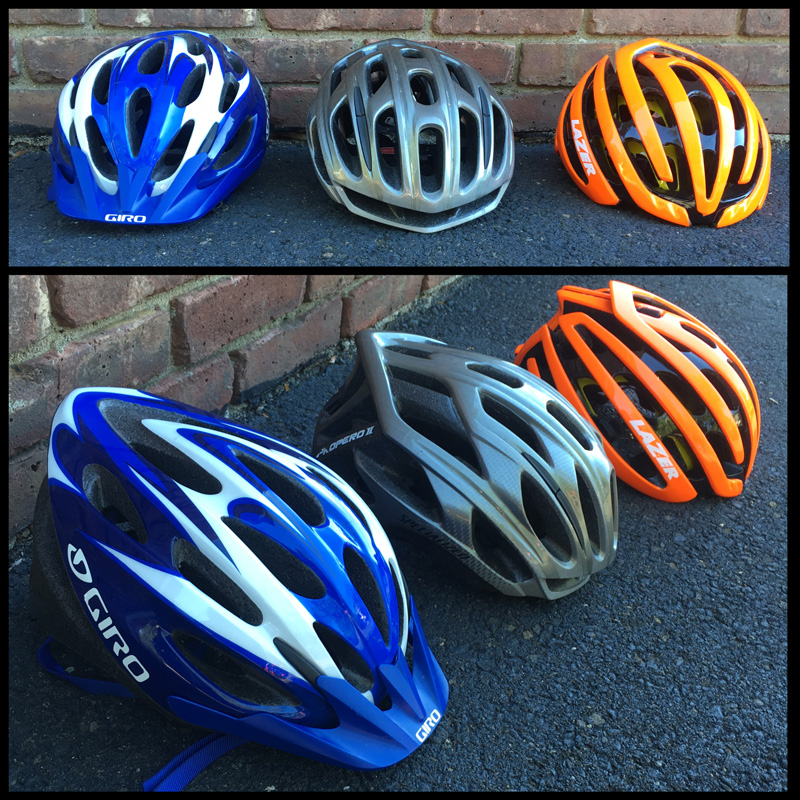When riding a bike, a helmet is something that must be worn. Whether you are eight or eighty years old, a helmet will make the difference between you walking away after an accident or you winding up in the hospital with a potentially serious brain injury. When I bought my first road bike I knew that I needed a helmet in order to ride safely and also be welcome with groups (most of which require helmets in order for you to join them on a ride). I knew I needed a helmet, but I figured it didn’t have to be an expensive or fancy one, so I bought a thirty-dollar mountain bike helmet. It was cheap, covered my head and the color even matched my bike! I liked it so much that when I bought a new bike three years later, I invested another thirty dollars in buying the blue version of that same helmet to match the color or my new bike. This helmet was fine, it did protect my head and was definitely far superior to wearing nothing at all.
As I started to ride with more groups, people sometimes made jokes about my helmet. I told them that my helmet was fine and I didn’t see what the big deal was. However, as a result of getting picked on a bit, I decided to do some research into helmets to see why I would even consider investing more money in a nicer one. Some things were obvious and others I hadn’t considered.
• More expensive helmets tend to be more lightweight making them more comfortable for longer rides
• Some lower priced helmets are “one size fits all.” Most nicer helmets allow for some size adjustment to ensure that the helmet is sitting on your head snugly and properly to give you maximum protection when needed.
• A better made helmet tends to have better airflow over your head, keeping you cooler and allowing your body to more efficiently release heat.
• Some higher end helmets go above and beyond industry standards with concussion prevention technology
o Helmets made with MIPS (Multi-Directional Impact Protection System)

The inside of a helmet with the MIPS protection system.
Wearing any helmet is better than not wearing one at all, but some are better at protecting your head in a crash than others. Many crashes are minor and are at slow speed, but for the ones where you are racing downhill and your tire blows out or if you have an incident with a car, you want to make sure your helmet is one that will do its job. MIPS stands for Multi-Directional Impact Protection System and adds a layer inside the helmet that absorbs some of the impact and allows your head to take less of the brunt of the fall. “Developed by neurosurgeons and scientists, this technology was created to reduce rotational forces on the brain caused by angled impacts to the head. In a helmet with MIPS brain protection system, the shell and the liner are separated by a low friction layer. When a helmet with MIPS technology is subjected to an angled impact, the low friction layer allows the helmet to slide relative to the head during an angled impact” (http://www.mipsprotection.com/history/). Numerous helmet manufacturers are starting to include MIPS technology in many of their top end helmets and some now even include it at a more moderate price point.

The evolution of my helmets over the years. From my original mountain bike helmet (far left) to my Propero (center) to my current Lazer MIPS helmet (right).
Now, after reading this, you don’t need to run out and buy a top of the line four-hundred-dollar helmet tomorrow, but do take some of these points into consideration when buying your next helmet. When I finally did invest in a new helmet I bought a middle of the line one hundred dollar Specialized Propero, which was a definite step up from my thirty-dollar mountain bike helmet. Honestly I didn’t believe that a pricier helmet would make any difference, but the first time I rode with this helmet I definitely did notice the difference. The helmet felt so light and airy and I had to admit that it was worth a bit of an investment. Several years later, as I got into road racing I did in fact invest in a more expensive Lazer Z1 helmet which does contain MIPS technology. The chances of crashing in road racing are much higher and I wanted my head to have the added protection.
One last thing to note is that helmets do wear out over time. The materials start to degrade and they become less effective, so make sure you are replacing your helmet every couple of years. You can always keep the old one as a backup, but you should really make the investment to protect your head if or when you do fall.